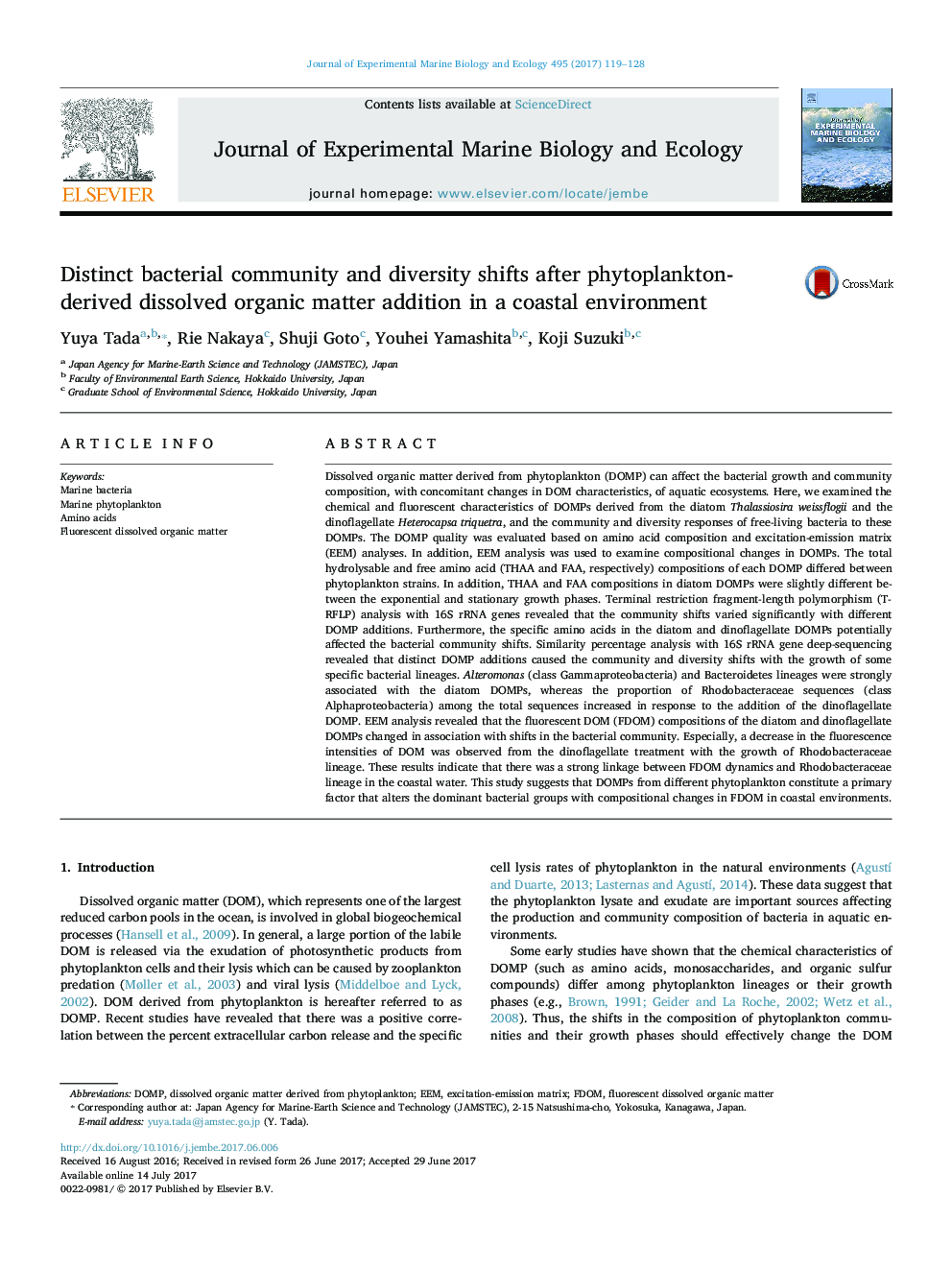| Article ID | Journal | Published Year | Pages | File Type |
|---|---|---|---|---|
| 5744477 | Journal of Experimental Marine Biology and Ecology | 2017 | 10 Pages |
â¢We examined bacterial community and diversity responses to DOMP additions.â¢DOMP quality was evaluated using amino acid composition and EEM analyses.â¢Amino acid and FDOM compositions of DOMPs differed among phytoplankton strains.â¢Bacterial community shifts varied with different DOMP additions.â¢FDOM compositions in DOMPs changed in association with bacterial community shifts.
Dissolved organic matter derived from phytoplankton (DOMP) can affect the bacterial growth and community composition, with concomitant changes in DOM characteristics, of aquatic ecosystems. Here, we examined the chemical and fluorescent characteristics of DOMPs derived from the diatom Thalassiosira weissflogii and the dinoflagellate Heterocapsa triquetra, and the community and diversity responses of free-living bacteria to these DOMPs. The DOMP quality was evaluated based on amino acid composition and excitation-emission matrix (EEM) analyses. In addition, EEM analysis was used to examine compositional changes in DOMPs. The total hydrolysable and free amino acid (THAA and FAA, respectively) compositions of each DOMP differed between phytoplankton strains. In addition, THAA and FAA compositions in diatom DOMPs were slightly different between the exponential and stationary growth phases. Terminal restriction fragment-length polymorphism (T-RFLP) analysis with 16S rRNA genes revealed that the community shifts varied significantly with different DOMP additions. Furthermore, the specific amino acids in the diatom and dinoflagellate DOMPs potentially affected the bacterial community shifts. Similarity percentage analysis with 16S rRNA gene deep-sequencing revealed that distinct DOMP additions caused the community and diversity shifts with the growth of some specific bacterial lineages. Alteromonas (class Gammaproteobacteria) and Bacteroidetes lineages were strongly associated with the diatom DOMPs, whereas the proportion of Rhodobacteraceae sequences (class Alphaproteobacteria) among the total sequences increased in response to the addition of the dinoflagellate DOMP. EEM analysis revealed that the fluorescent DOM (FDOM) compositions of the diatom and dinoflagellate DOMPs changed in association with shifts in the bacterial community. Especially, a decrease in the fluorescence intensities of DOM was observed from the dinoflagellate treatment with the growth of Rhodobacteraceae lineage. These results indicate that there was a strong linkage between FDOM dynamics and Rhodobacteraceae lineage in the coastal water. This study suggests that DOMPs from different phytoplankton constitute a primary factor that alters the dominant bacterial groups with compositional changes in FDOM in coastal environments.
